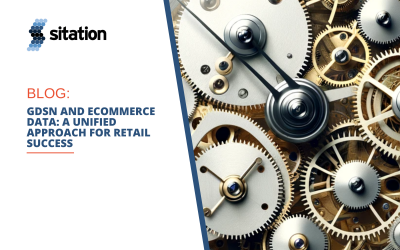As companies continue to expand their digital footprints, the importance of structuring and managing product data efficiently becomes increasingly crucial. Embracing the right data model is fundamental to maximizing the potential of this digital transformation.
But with this growth comes an important question: What is the most effective data model for your company? Should you opt for a flat or packaging hierarchy data model? And how should your product information be displayed – as individual rows with columns or different connected records?
This has sparked spirited debates among businesses, each arguing for their preferred approach. Let’s take a closer look at these two models and see what’s best for your organization.
Flat Data Model
A flat data model, also known as a row-based model, stores all product information in a table with rows and columns. This means that each product is represented by one row of information, making it easy to view and manage. This structure includes all levels of packaging for that product: each, case, and sometimes pallet data are all included in a single row. It’s a simple and straightforward approach that works well for smaller businesses with a limited number of products.
However, managing all the data in a single table can become overwhelming as your business and product range grows. A flat data model does not allow for multiple packaging configurations for products, creating a need for duplicative and confusing item setups. It can also lead to inconsistent information, disrupting supply chain operations and harming customer experiences.
Packaging Hierarchy Data Model
On the other hand, a packaging hierarchy data model organizes product information into multiple records based on packaging level. Each record is still considered flat, however, they are linked to create a packaging hierarchy. This means that each product may be represented by multiple records representing different levels of hierarchy such as each, case, or pallet.
With a packaging hierarchy, each record can be managed separately, allowing for better data accuracy and consistency. For example, weights and dimensions for the case are only stored on the case record. Whereas in the flat model weights and dimensions for all levels of the hierarchy are stored on the same record. This model is more complex but offers greater flexibility and scalability for larger businesses with diverse product lines.
The Tipping Point
So, which data model is the right one for your company? The answer lies in finding the tipping point where a flat data model becomes insufficient, and a packaging hierarchy becomes necessary. This will depend on the size and complexity of your business and your product range.

As a general rule, smaller businesses with singular packaging structures that rarely ever change may find success with a flat data model. However, as your business grows and your product offering becomes more diverse, a packaging hierarchy may become the better choice.
Ultimately, the most important factor is ensuring that your chosen data model can effectively manage and share accurate product information. This will improve supply chain operations and enhance customer experiences, ultimately driving the success of your business.
GDSN Compliance
Ready to take your product information management to the next level with GDSN? A packaging data hierarchy is required to leverage the many benefits of The Global Data Synchronization Network (GDSN). If your overall strategy is to use GDSN and e-commerce data in a unified approach for retail success, the data model decision is made for you.
Conclusion
While the flat data model may be simpler to implement and manage for small businesses, it may not provide enough flexibility and scalability for growing companies.
Conversely, the packaging hierarchy data model may require more resources and expertise to set up initially, but it can better accommodate larger businesses with diverse product lines.
It’s important to carefully consider your company’s current and future needs when deciding on a data model. Consider consulting with experts here at Sitation to make an informed decision. If you are ready to join the growing network of businesses utilizing GDSN and stay ahead in the competitive market, our team can help you get started.
Remember, choosing the right data model can greatly impact the efficiency and success of your business. So, choose wisely and stay ahead of the competition with effective product information management.




